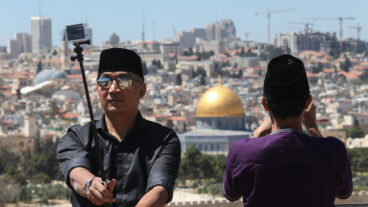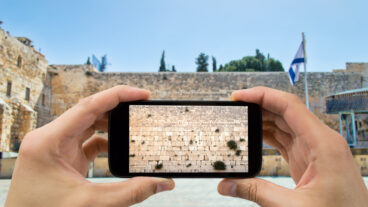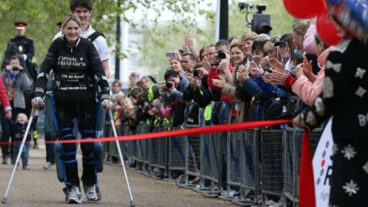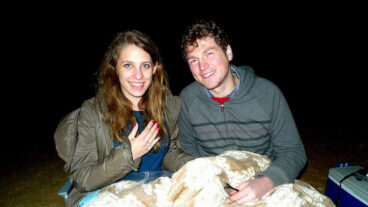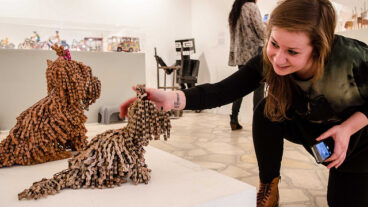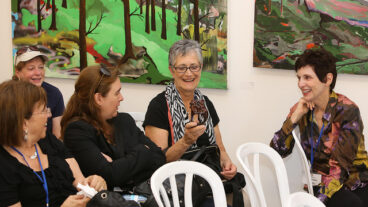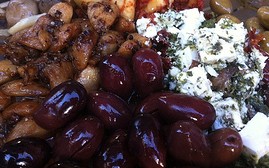Change is inevitable in any city, let alone one with a 3,000-year-old history.
A classmate of mine at university once recounted the tale of her visit to an African country in the early 1960s where she was detained by the border control official who became suspicious after seeing her place of birth listed as Jerusalem. Until that encounter, he had never realized that Jerusalem existed as a real city rather than just as a heavenly concept.
Jerusalem tends to be idealized like that. There often seem to be two Jerusalems existing alongside each other. Not west and east. More the heavenly and the earthly.
Many psalms, songs and poems have been written about Jerusalem over the years, nay, millennia. Recently I found myself singing along to “Yerushalayim sheli,” (My Jerusalem), in which lyricist Dan Almagor records the Jerusalem of various characters, among them: “The peddler from Mazkeret Moshe” for whom Jerusalem “is Mahaneh Yehuda [market] on festival eves”; “the cobbler from Katamon” whose Jerusalem is “a tenement without a store and hopping on the bus”; and “the bathhouse attendant” from Mea She’arim whose Jerusalem is “the whisper of a prayer of days to come.”
My Jerusalem is yet something else. Ahead of Jerusalem Day on May 16, which this year marks the 40th anniversary of the city’s reunification, an endless parade of politicians, social commentators and artists have been interviewed in the Israeli media on their views of Jerusalem’s past, present and future. Everyone has a different perception of the capital, colored by their own experiences. For me, Jerusalem is simply home. And I love it.
Jerusalem is the city of contradictions. They say that cleanliness is next to Godliness. If that was so, Jerusalem would have to forgo its name as the Holy City. Jerusalem is not perfect. There are pockets of poverty and profound social problems. Its residents can be nosey and noisy (or caring and carefree depending on my mood). The security situation makes being alert second nature to Jerusalemites. At the height of the Palestinian hostilities, my neighbors quipped that it must be the only capital in the world where people are scared to go out during the day but feel safe on the streets at night. There is the sound of never-ending construction and the silence of ancient graves like the impressive Absalom’s Tomb. One of the liveliest areas, with its cafes and boutiques, is Emek Refaim the Valley of the Ghosts.
My Jerusalem is not that of a tourist. Most visitors don’t end up in a Hadassah University Hospital ward. Neither, apparently, do all those critics who talk of an apartheid policy. Jewish and Arab doctors and nurses work to help Jewish and Arab patients, without differentiation.
Natural coexistence is also evident at the Tisch Family Biblical Zoo, where Arabs and Jews secular and ultra-Orthodox enjoy themselves side by side.
The leopard might not lie down with the kid, but there are signs that it’s not such a fantastical notion. Anything is possible at a zoo which receives food for the animals from the traditional priestly tithes.
The Jerusalem I live in has a (tiny) Natural History Museum where the model dinosaur is called Zrubavel (Zerubbabel), after the hero who led the return of the Jews from Babylonian exile. It has the Bible Lands Museum; the
world-class Israel Museum; the hands-on Science Museum; and the Islamic Art Museum where you can pass the time looking at its clock collection. For the best view of Jerusalem’s history (and the city itself) climb to the top of the Tower of David Museum.
The Western Wall is in my Jerusalem. Known to the tourists as the Wailing Wall, a name most Jerusalemites detest, my nephew as a four-year-old renamed it the Wishing Wall. I tend to ‘use’ the Kotel rather than visit it. It’s only a bus ride away, and when I really want God to get the message, I feel it’s worth traveling there to hand-deliver a note with a prayer into the ancient cracks.
Yad Vashem also exists in my Jerusalem, a monument to prayers that went unanswered. Many cities around the world now ‘boast’ Holocaust museums. But my late Austrian-born aunt visiting Jerusalem from England once noted: “Yad Vashem is the only place I can go to say Kaddish.” No museum in the world can provide a suitable venue for reciting the Prayer for the Dead for those
who have no graves.
But my Jerusalem is more about life. Catch the classics played by the Jerusalem Symphony Orchestra; watch contemporary theater at the Khan; the best foreign films appear at the Cinematheque; the box-office hits are available in the suitably commercialized malls. There’s the top-rate Israel Festival and Puppet Festival, and amateur performances galore. (My Jerusalem definitely includes JEST, the Jerusalem English-Speaking Theater.) When the money runs out, there are the free performances of street theater. In fact, just watching the world go by over a drink in one of the many coffee shops is cheap entertainment.
People are crazy about places like Paris. In Jerusalem, they GO crazy. No other city inspires its own medically recognized syndrome a psychosis that afflicts normally sane tourists who start hearing voices other than what the rest of their group is hearing (“For you, I make a special price…”).
Jerusalem often drives me crazy. If it¹s a peaceful Jerusalem you seek, stay away from the No. 18 bus where passengers argue over everything from the lack of seats to politics even though they all seem to support Bibi.
My Jerusalem is centered around the Katamonim where every Betar Jerusalem win is announced by honking car horns. On a Friday afternoon, it sometimes seems the whole neighborhood smells of kubbeh, freshly-shampooed kids, and the bunches of flowers sold by the weekly vendors.
For relaxation, I go to the Jerusalem Pool, where in the changing room I can also catch up on the local gossip and hottest summer plans.
On a Saturday afternoon, I can usually be found along with many, many others in San Simon Park, near the Greek monastery. The site of a bitter battle in 1948, it is now a wonderful playground where the kids run free, Israel-style, and their parents aren’t afraid to let them out of their
sight.
Jerusalem has changed over the years. Whatever happened to the man who used to sell hot corn on the cob at the traffic circle next to Beit Elisheva? Or the man who used to ask Kfir Cinema patrons not to litter or make a noise in the age BEFORE cell-phones?
Their Jerusalem, too, was different. But, then, change is inevitable in any city, let alone one with a 3,000-year-old history.
(Reprinted from The Jerusalem Post)




